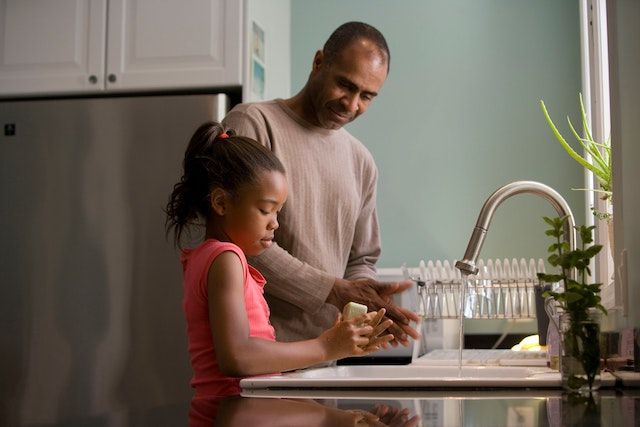When something is going on in the world - be it news of a terrorist attack or a viral outbreak putting major cities on lockdown - our children inevitably learn about it. But how can we help them manage these anxious thoughts and ensure our children are safe?
Children have constant thoughts and combined with their wonderful imaginations, these thoughts can take them to whole new worlds. Children need information from a trusted source because if they don’t have this, they will naturally fill in the gaps. This can lead to their thoughts turning into worries and fears.
As an adult, these fears and worries may be difficult to understand, but for children, these feelings are very real. They need our help to navigate through these concerns.
So, how do you know if a child has become overwhelmed with fear or worry?
When it comes to worried thoughts of a child, they may be less likely to want to share these and their behaviours might reflect what they are thinking. The first place to start is to notice any changes in their normal behaviour, this will generally indicate if the child may be struggling with something.
Changes to keep an eye out for include if they become extremely shy, timid or clingy, have real difficulties mixing with other children, have difficulty falling and staying asleep, have repeated nightmares (more than once a week), repeated complaints of headache or tummy ache, or are constantly asking if things are all right or other ways of asking for reassurance.
How can I help an anxious child?
Firstly, try and talk calmly to the child about the things that are worrying them. Reassure them whenever possible.
Talk things through with them. Discuss what they already know, and answer any questions they may have. It is often wise to answer children’s questions about illness in a factual but not overly detailed way.
Develop a routine together. If the child sees you continuing this routine in a calm and everyday manner, it can reassure them. Try whenever possible to do things together and over time they will relax into the new routine and eventually continue doing it themselves.
Try using the following phases and actions to help the child to reduce their fears and anxious thoughts. Remember that what you’re doing is right - you know your child best and what they need most is reassurance that things are fine, and that they are safe and loved. Things will get better.
Six phrases to say to make your child feel better
- What can we do to make you feel better?
- Tell me about what’s worrying you.
- I’m going to stay with you until you feel better.
- It will be OK soon.
- You will get through this.
- You are loved.

Five practical ways to help your child lighten their anxious energy
- Do some dancing or running on the spot to get rid of some of your worry energy.
- Ask them to draw how they are feeling.
- Lie down on the floor together with your child’s head on your tummy and try not to laugh. This will automatically generate laughter, which can be a great release for pent up energy.
- Read a book together.
- Allowing them to cry. This is their body telling them that this is how they need to react in the moment. Sitting and cuddling their parent or caregiver is sometimes the best way to release those worries.
Try child-friendly breathing exercises
Breathing exercises are widely known to help calm the thoughts and body down. It’s important to try and practice these with your child when they are calm. Eventually, when they are experiencing strong emotions, these techniques will be second nature and automatically ‘kick-in’ when needed.
Exercise 1 - sit next to each other and follow each other breathing. Encourage them to follow your breathing if they are younger children. With each breath, take in deeper breaths and then breathe out for longer. As the child follows your breathing, their breathing will slow down with yours.
If they are older, try and sit next to each other and repeat the above action but this time count together - breathing in for five and out for eight.
Exercise 2 - lift one hand in front of you, palm facing out and fingers spread apart. Place the index finger of your other hand at the base of your thumb and breathe in while you move your finger up one side of your thumb. Move your finger down the other side of your thumb and breathe out. Do the same thing with the remaining four fingers, and take deep breaths in and out as you move your finger. After you’ve reached the second side of your pinky finger, you’ll have done five complete deep breaths.
There are many different ways to help a child to become calmer mentally and physically, but it can be so much more effective to do these activities together so that they don’t feel alone in their big emotions. If they are not with you all the time, it’s important to practice new routines and techniques with you, so that they know how to manage these feelings, and control how they feel when they are alone.
For more information on anxiety in children, or for calming exercises and free activities and resources, visit Counselling Directory. You can download and print anxiety booklets, as well as mindful colouring bookmarks and comic strips.


Comments